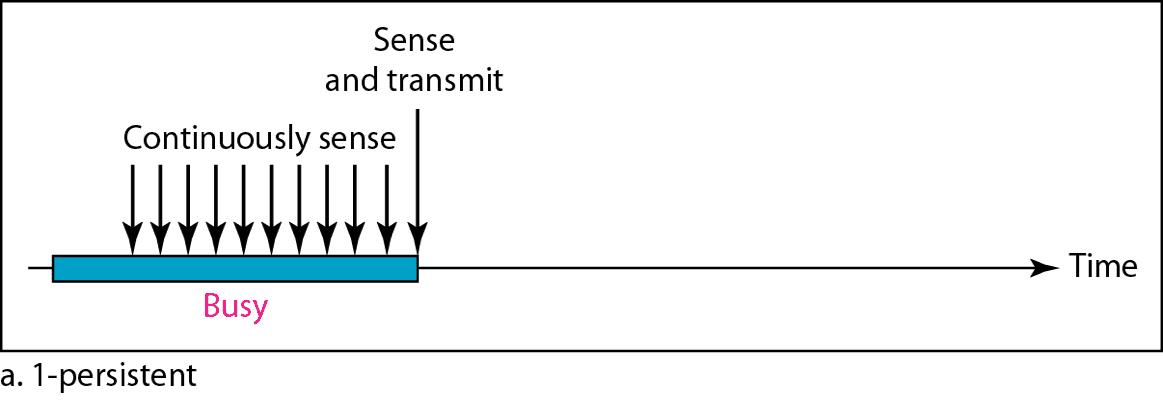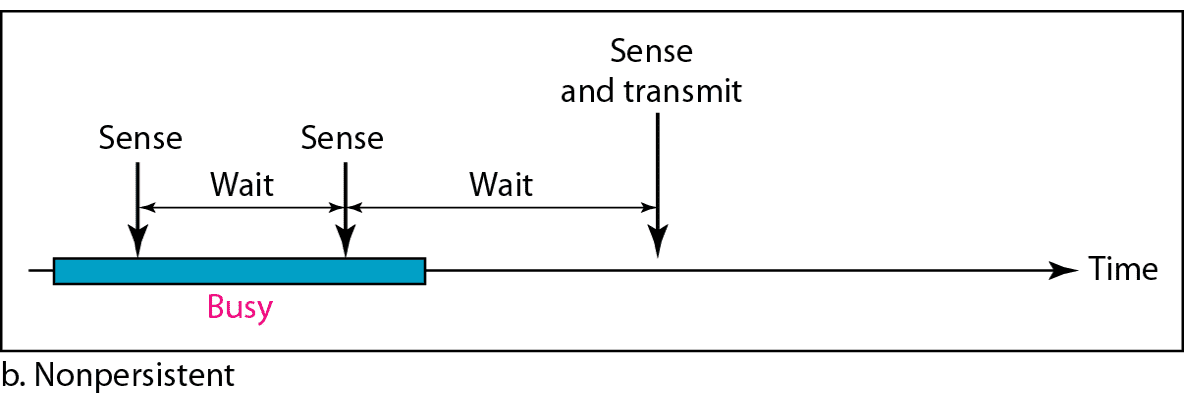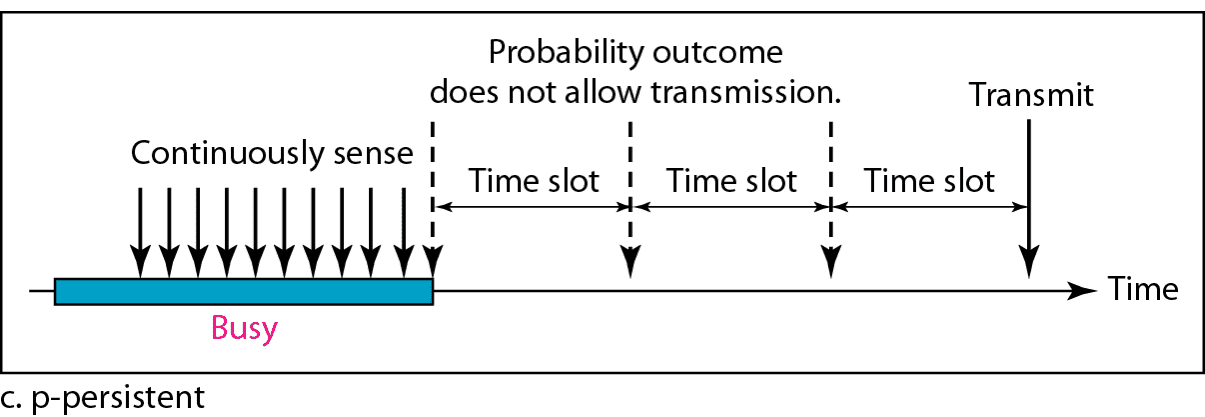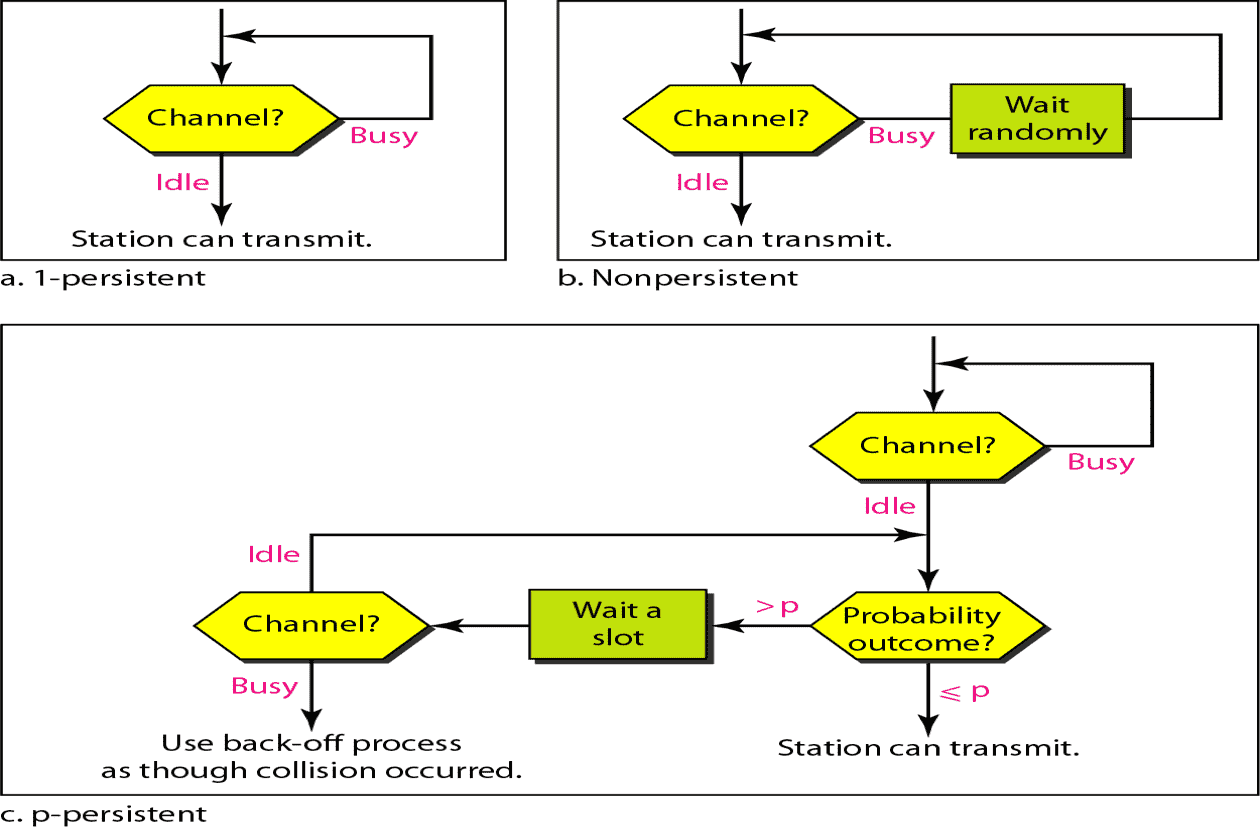05 Multiple Access
Access Protocols¶
| Random-Access/ Contention | Controlled-Access | Channelization | |
|---|---|---|---|
| No station is superior to another No station permits another station to send at the same time Node with packet transmits at full channel data rate All transmission on shared channel | |||
| Collisions | Moderate | Little-to-none | |
| Throughput for smaller networks | Low | High | |
| Throughput for larger networks | High | Low | |
| Easy to maintain? | ✅ | ❌ | |
| Commonly-used? | ✅ | ❌ (Hard to control large networks) | |
| Example | ALOHA CSMA CSMA/CD CSMA/CA | Reservation Polling Token-Passing | FDMA TDMA CDMA |
Collision¶
When 2 nodes transmit concurrently
Carrier-Sensing¶
When the energy level is higher than usual, that means that there is a collision

However, this method may not suitable for wireless transmission, due to energy loss.
Persistence Methods¶
| 1-persistent | Non-persistent | \(p\) - persistent | |
|---|---|---|---|
| Default persistent method | Probabilistic mixture of 1-persistent & non-persistent Assume channels are slotted One slot = contention period (one RTT) Used when time slot duration \(\ge\) max \(T_P\) | ||
| Steps | 1. Sense channel 2. if idle, transmit immediately 3. If busy, keep listening | 1. Sense channel 2. If idle, transmit immediately 3. If busy, wait random amount of time and sense channel | - When station ready to send, it senses the channel - If channel is idle, transmits with probability \(pp\) - If channel is busy, station waits until next slot. - With probability \(q=l-p\), the station then waits for beginning of next slot - If next slot also idle, either transmit/wait again with probabilities \(pp\) & \(q\) - Process repeated till either frame transmitted/another station starts transmitting - If another station transmits, station waits random amount of time & starts again |
| If collision occurs | Wait ranom amount of time & start over | Wait random amount of time & start over | |
| Diagram |  |  |  |
